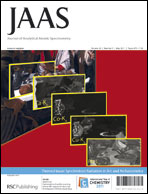Optimization of mobile scanning macro-XRF systems for the in situ investigation of historical paintings†
Abstract
Elemental distribution maps are of great interest in the study of historical paintings, as they allow to investigate the pigment use of the artist, to image changes made in the painting during or after its creation and in some cases to reveal discarded paintings that were later over painted. Yet a method that allows to record such maps of a broad range of elements in a fast, non-destructive and in situ manner is not yet commonly available; a dedicated mobile scanning

- This article is part of the themed collection: Synchrotron Radiation in Art and Archaeology

 Please wait while we load your content...
Please wait while we load your content...